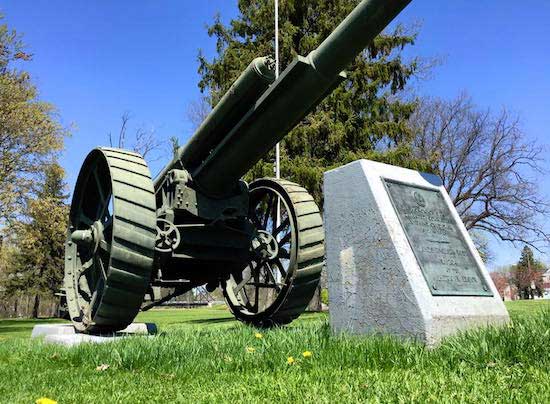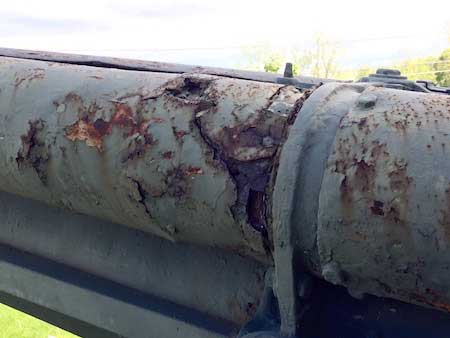Medina’s WWI cannon at State Street Park heading to Pa. for restoration

Provided photos: A cannon that was used in World War I about a century ago will be removed from State Street Park in Medina on March 12 and taken for restoration work in Altoona, Pa.
MEDINA – A cannon used in World War I that has been a prominent memorial at State Street Park will get much-needed restoration work beginning next month.
The cannon, manufactured in 1916, was fired during World War I. Every Memorial Day for about 80 years, the Medina community has gathered by the cannon for the solemn ceremony.
The cannon, however, has become badly deteriorated and will be restored for $40,000. George Bidleman of Orleans Ford is raising the funds for the project.
The Orleans Renaissance Group first pushed for saving the cannon about two years ago. The VFW and American Legion both supported the effort.
“She is in dire need of being restored – not just the paint but the whole body,” said David Kusmiersczak, a member of the Legion.

The cannon has become badly deteriorated. It will be refurbished and should last another century.
The cannon will be moved on March 12 and taken to Altoona, Pa. That is the location of Seed Artillery Reproduction and Restoration.
The cannon will be stripped down. The parts will be repaired and re-manufactured if necessary. The gun will be primed and painted with epoxy primer and finished to match the original WWI paint scheme.
Seed Artillery will try to have the project done in time to be back in Medina for Veterans Day in November, said Steve Johnson, American Legion commander in Medina.
The cannon will return to a concrete base and landscape improvements. The Orleans Renaissance Group also is working to add new flagpoles and an interpretive sign at the site.
The cannon is a British Heavy Field Gun known as a B.L. 60 Pounder, manufactured in 1916 by Elswick Ordnance Company, Newcastle upon Tyne, England.
It weighs 6 tons, is a 5 inch/127mm caliber, 21 feet in length and 6 feet in width. The gun was originally issued to battery in France, April 1917 and fired 2,871 rounds during its first tour. It was returned to England in 1917 for repairs and reissued to battery in France, September 1918, firing an additional 1,471 rounds.







































































